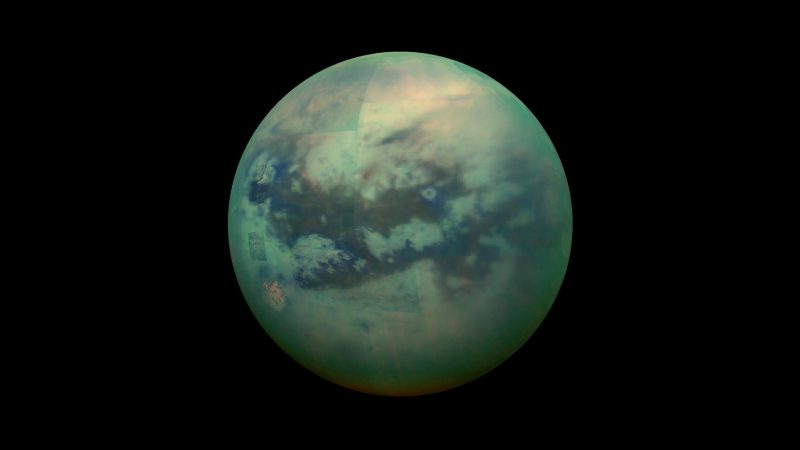
A research team has discovered huge ice feature on Titan while trying to understand where Saturn’s largest moon gets all of its methane.
Like Earth, Titan has rain, seas and a surface of eroding organic material. However, on Titan it is methane, not water, that makes up the raindrops and fills the lakes.
A team of scientists searching for the source of Titan’s methane discovered something unexpected – a long corridor of ice that wraps nearly halfway around Titan, making it over 4,000 miles (6,400 km) long.
Caitlin Griffith is a professor in the Lunar and Planetary Laboratory at the University of Arizona and lead author on the paper published April 29, 2019, in the peer=reviewed journal Nature Astronomy. Griffith said in a statement:
This icy corridor is puzzling, because it doesn’t correlate with any surface features nor measurements of the subsurface.

Titan is the only object in the solar system other than Earth that is known to have liquid rain. On Titan it’s methane rain, not water, which fills the huge lakes that exist on the moon’s surface. Scientists aren’t sure where Titan’s methane comes from. There is no obvious source, except the evaporation of methane from the polar lakes. But Titan’s lakes contain only one-third of the methane in Titan’s atmosphere.
One theory is that the methane could be supplied by subsurface reservoirs that vent methane into the atmosphere. Prior studies of Titan indicate the presence of what looks like a cryovolcano – an ice volcano that erupts slurries of volatile compounds such as water or methane instead of lava.
The research team set out to study the composition of Titan’s surface, analyzing images from the NASA Cassini mission’s flybys of Titan, partly hoping to find subtle small cryovolcano candidates. They analyzed half of Titan’s surface and none were detected, but, in a surprise discovery, came across the ice feature. The researchers wrote:
Titan’s global ice feature presents a puzzle. Ice-rich terrains in other areas of Titan occur only in local regions excavated by craters or exposed by erosion, suggesting that cryovolcanism, if active, is currently not widespread.
Researchers say the presence of the ice corridor raises the question of whether tectonic processes might have been involved in Titan’s formation. Griffith said:
Given that our study and past work indicate that Titan is currently not volcanically active, the trace of the corridor is likely a vestige of the past. We detect this feature on steep slopes, but not on all slopes. This suggests that the icy corridor is currently eroding, potentially unveiling the presence of ice and organic strata.
Bottom line: Researchers have discovered an enormous ice corridor that wraps almost halfway around Saturn’s largest moon Titan.
Source: A corridor of exposed ice-rich bedrock across Titan’s tropical region











